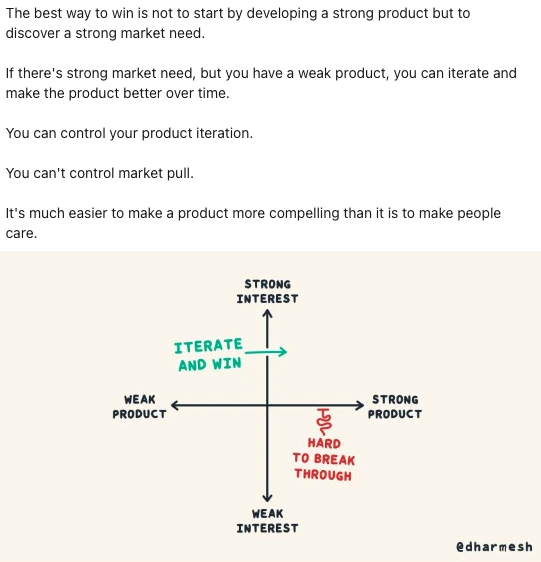When businesses design and manufacture new products, the temptation to dive straight into development is strong. A promising idea comes up, the team gets excited, technical specs start forming, and before long, everyone is knee-deep in design files, prototypes, and factory coordination. But here’s the problem: without strong early product idea validation, all that momentum might be built around a flawed premise.
Why Most New Products Fail
According to The Right It by Alberto Savoia, about 80% of new products fail to meet expectations, even when execution is competent.
The primary reason? Not poor engineering or supply chain mistakes, but simply that the market didn’t care. Savoia refers to this as a failure of the Premise, which is the “P” in his FLOP framework (Failures due to Launch, Operations, or Premise). And most failures, he found, stem from Premise.
The Risk of Validating an Idea in “Thoughtland”
Many companies fall into what Savoia calls “thoughtland.” It’s a well-meaning but misleading stage where teams gather opinions from experts, survey potential customers, or study similar products in the market. The data sounds helpful, but it’s rarely predictive of actual market behavior. As the saying goes, what people say they’ll do and what they actually do are two very different things.
A Smarter Product Idea Validation Approach: Test Before You Build
Instead of jumping to execution, Savoia suggests something more rigorous: pre-development experimentation. The idea is simple: Validate the product premise before committing serious resources.
Here’s how:
- Build a mockup or landing page to simulate the product idea and see how people react.
- Set clear hypotheses about your market: who you’re targeting, what problem you solve, and how much they care.
- Score interest by level of commitment, for example, showing interest is one thing, but giving an email address is a stronger signal, and putting down a deposit (even if it is just $5, in exchange of having priority in buying the product at a discount price when it launches) is much stronger.
- Run variations of the idea to refine your messaging or features and see what resonates best with your actual target users.
This approach may feel uncomfortable for teams used to relying on traditional product development roadmaps. But as Savoia emphasizes, it’s the best way to find “The Right It;” the product that the market is pulling for.
From Pull to Build
One of the best visual summaries of this idea is from Dharmesh Shah, who shared a graphic on LinkedIn that maps out two very different product development journeys:

- The typical path: Build the product, then discover whether the market wants it.
- The smarter path: Discover market pull, then build the product to match that demand.
This chart makes a powerful statement. Once you detect real demand, the risk of failure drops dramatically. Instead of hoping the market likes what you made, you’re giving the market what it already showed an interest in.
Avoid the Build-First Trap
Especially when manufacturing in Asia, the logistics and cost of going into production can be substantial. If you’re basing that investment on enthusiasm rather than evidence, the risks are high. A common pitfall looks like this:
- Someone has a “great idea.”
- The team gets excited and starts designing.
- Some light market data is gathered (often to impress stakeholders or raise funds).
- Production begins.
- Only after launch does the team begin to learn what the market really wants (or doesn’t).
At this point, adjustments are expensive. Sometimes, companies treat version 1.0 as a market test, thinking v2.0 will get it right. But much of that learning could have happened before a single prototype was made.
Conclusion
If your business designs and manufactures products, you already know how complex and expensive new product development can be. Early product idea validation isn’t just a “nice to have.” It’s a critical step to ensure your efforts lead to something the market wants.
Before you build, validate. It might just save your next product from becoming part of the 80% that fail.
P.S. You might like these videos
If you don’t have time to read The Right It, there’s a great video summary series starting here. These short, practical videos walk through Savoia’s methodology and show how to test product ideas with minimal cost and risk.



